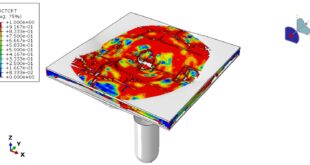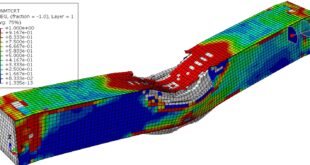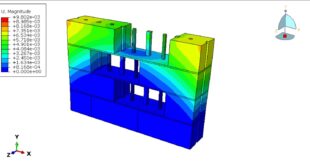In this tutorial, the Simulation rigid projectile impact to the ceramic-CFRP panel in Abaqus-Damage investigation – has been done. The rigid projectile is modeled as a three-dimensional shell part. The ceramic is modeled as a three-dimensional thick solid part. The CFRP or carbon fiber is modeled as a three-dimensional shell part with sixteen layers. You can see a figure of the assembled parts below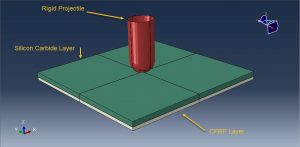
Ceramic materials are commonly used in armor protection applications. In recent years Johnson, Holmquist, and their coworkers have developed a series of constitutive relations to simulate the response of ceramic materials under large strain, high strain rate, and high-pressure impacting conditions. The target material is silicon carbide. This material is very hard and mainly used under compressive load conditions and can only sustain very little tension. Typical applications include bulletproof vests and car brakes due to their high endurance. The strength has a dependence on pressure. In high-speed impact applications, damage to the material plays an important role in the evolution of the strength. The totally failed silicon carbide will not sustain any load. In this simulation, the Johnson-Holmquist material model is selected for the ceramic.
Damage initiation refers to the onset of degradation at a material point. In Abaqus, the damage initiation criteria for fiber-reinforced composites are based on Hashin’s theory. These criteria consider four different damage initiation mechanisms: fiber tension, fiber compression, matrix tension, and matrix compression. Sixteen layers with different fiber orientations are used to define the CFRP layups.
Dynamic explicit step and general contact capability as interaction is used. The perfect contact is assumed between ceramic and CFRP. Because of the symmetry, one-quarter of the whole parts are modeled and because of that, the symmetry boundaries are assigned to the symmetry zones. The initial velocity is applied to the rigid projectile. The mesh should be fine especially around the contact zone to get proper results
After the simulation, all results such as stress, strain, ceramic failure, and damage, CFRP damage, degradation, and… are available. You can see some figures for the results below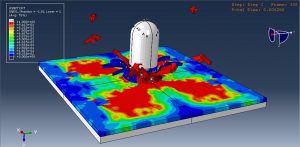
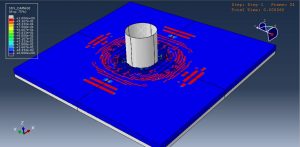
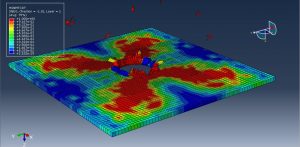
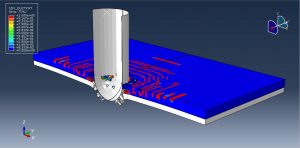
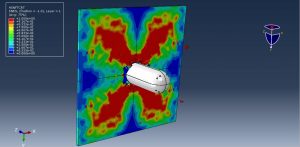
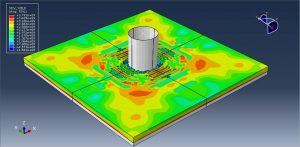
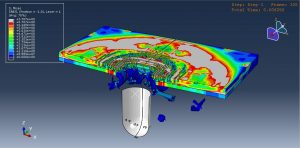
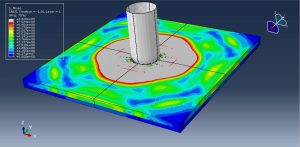
You can provide CAE, INP, and English video files of this simulation here. The cost of these files is Twenty-Six Euros. you can click on the bellow bottom to beginning the process
You can purchase the tutorial through a PayPal account, a Visa, or a Master card, just before payment, send me an email to this address: karampourp@gmail.com
 Abaqus tutorials Abaqus tutorials
Abaqus tutorials Abaqus tutorials
